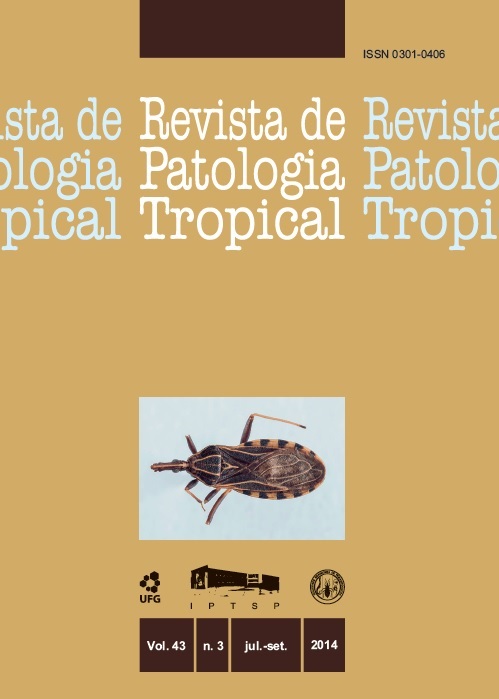FREQUENCY OF ENTEROPARASITES COLLECTED IN FECES OF DOGS IN PUBLIC SQUARES IN THE CITY OF PINDAMONHANGABA, SP, BRAZIL
DOI:
https://doi.org/10.5216/rpt.v43i3.32204Keywords:
Zoonosis, parasitic diseases, dogsAbstract
Despite the importance of domestic dogs to humans, the benefits of interaction are significantly attenuated when these animals contaminate mutual interaction environments with zoonotic pathogens. The present study aimed to evaluate the occurrence of parasitic forms in fecal samples from dogs (Cannis familiaris) collected in public squares in the city of Pindamonhangaba from September 2010 to September 2011. A total of 640 fecal samples were collected at eight public squares and sent under refrigeration to the laboratory of parasitology of FAPI, when submitted to Willis-Molay (1921) and modified Ritchie (1948) methods which, after examination by light microscopy, were positive for evolving forms of potentially zoonotic helminthes namely: Ancylostomidae (23.4%), Toxocara sp (8.1%) and Trichuris sp (3.1%). There was a significant prevalence (p <0.05) of evolving forms of Toxocara sp. in the period corresponding to early spring, however, Ancylostomidae was more prevalent in the early summer and early autumn. It was also possible to observe a significant difference (p <0.05) in the efficacy of Willis-Molay method (27.18% of positive samples) for parasitological diagnosis when compared to the Ritchie modified method (8.1% of positive samples). Based on the percentage of positive samples that was observed, it is expected that the results of this research may serve as subsidy for programs aimed at controlling the population of stray dogs, besides the periodic treatment of these animals, as well as the promotion of health education of the population regarding the collection of feces of their dogs, avoiding contamination of public places.
Downloads
Downloads
Published
How to Cite
Issue
Section
License
The manuscript submission must be accompanied by a letter signed by all authors stating the full name and email address, confirming that the material has not been published or is under consideration for publication elsewhere, and agreeing to transfer copyright in all media and formats for Journal of Tropical Pathology. The authors will not be paid for published articles. They are solely responsible for the content of those articles, even if the Editor holds the right to adjust them to the norms of the journal.
The reviewers will not be paid for the peer review process.

